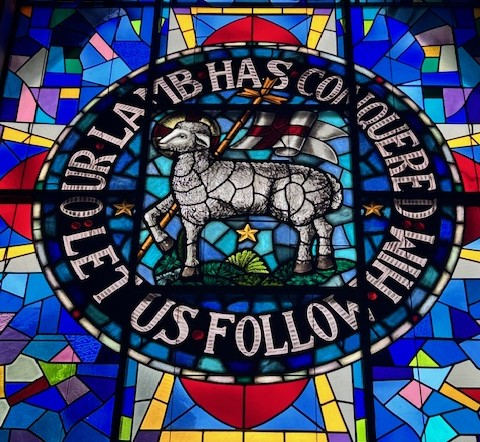Moravian Lovefeast Services
Fairview Moravian Lovefeast Services are held throughout the year. Among the most attended Fairview Lovefeasts are the Christmas Lovefeasts, this year to be held on December 21st at 10:00am with no band prelude and December 24th a 2pm, candlelight service with a Moravian band prelude beginning 30 minutes prior to the start of the church service. During a Lovefeast service attendees share in a Moravian Lovefeast bun and a cup of coffee. In addition, at the Christmas Lovefeasts attendees also receive a trimmed bee’s wax candle made at Fairview Moravian Church. Every Lovefeast is special, but the candlelight Christmas Eve services are absolutely awe-inspiring, definitely a time to remember and to feel the love God intended for all of us to feel; come be a part this year! There are several Lovefeasts held during Fairview’s 10:00 am services throughout the year, including Palm Sunday, Thanksgiving, and an October Missionary Lovefeast. There is a 30 minute band prelude prior to the start of each Lovefeast church service.
Easter Sunrise Service
The oldest service still held annually in America, the Moravian Easter Sunrise Service is held in God’s Acre, the cemetery in Old Salem. Members from many Moravian congregations meet in Winston-Salem, NC in front of Home Moravian Church, at the center of Old Salem, for an outdoor church service. Service material is provided. Then, accompanied by several Moravian bands along the way, attendees walk a few blocks into God’s Acre as the bands play and echo each other. As the sun rises, it is an inspiring sight to behold and an experience you will always remember. As Easter approaches, you can go to Home Moravian Church’s website and look under “Sunrise Service” to find the current year’s Easter Sunrise service time and additional details. Other Lenten services, such as the choral Great Sabbath on the Saturday evening before Easter, are also listed on Home Moravian Church’s website .
A Summary of Our Moravian History
The Moravian religion is said to be the first protestant religion. The founder was Jan Hus, a Catholic Priest from Bohemia who maintained the idea that everyone should be able to read the bible in their own language, rather than just the priest in Latin. This concept was against the Catholic religion, so Hus was deemed a heretic and was burned at the stake on July 6, 1415. The Hussik wars followed and for close to 100 years the Moravians known as the Unitas Fratum, worshipped underground. Count Zinzendorf in Germany welcomed the Moravians, who established Herrnhut following the Protestant Reformation brought about by Martin Luther. The Moravians later went to Savanah, Georgia and had a rather unsuccessful time so they traveled and settled three towns in Pennsylvania. Bethlehem is still the main hub of the Moravian Church. The Moravian church bought 100 acres of land in North Carolina from Lord Granville. Fifteen men traveled to the N.C. property to settle and establish an economic development for the church. Eleven of the men, all single brothers and all tradesmen settled in Bethabara in November 1753. The intention was not to stay in Bethabara, but to establish a central location in the tract of land they bought, known as Der Wachany, but their efforts were halted by the French and Indian war. In 1766, the Moravians finally settled Salem, the central location. They took the houses down in Bethabara and moved them to Salem. Then Bethabara became an agricultural area to sustain Salem. More information is available at the visitor center in Bethabara in the form of tours and demonstrations of the trades; there are currently various festivals, highlighting original buildings and trades that occurred in Bethabara. The Moravian religion is based on the teachings of Jesus Christ. To learn more about Moravian history, please visit Moravian.org.
THE MORAVIAN SEAL

The Moravian Seal is a symbol of the Moravian Church. The image in the center dates to the 1500’s and is referred to as the Agnus Dei – Latin for “Lamb of God.” The lamb, who represents Jesus Christ, holds a staff with a banner representing victory.
THE MORAVIAN STAR


The Moravian Star is an illuminated star-shaped lantern, most commonly having 26 points. It is an emblem for the Moravian Protestant faith and is used for advent and Christmas. The Moravian Star originated in Saxony, Germany, in the two towns of Niesky and Kleinwalka in the 1830’s. The stars started out teaching geometry to young boys in the Moravian school, but they were quickly adopted by the Moravian Church as a symbol of the birth of Jesus and represented the star of Bethlehem. Click here to learn more on Moravian.org.